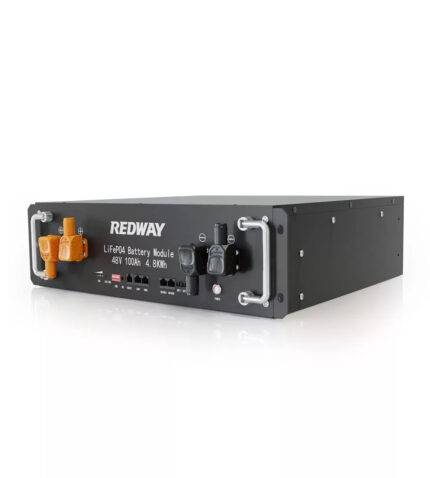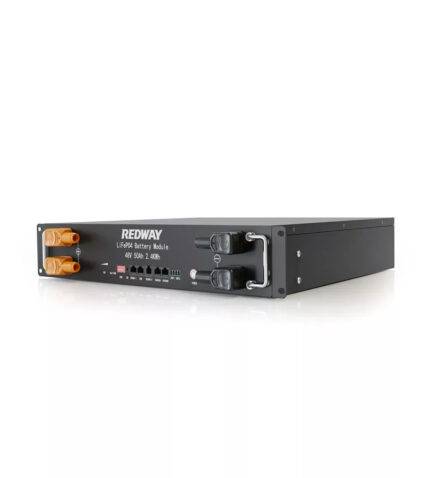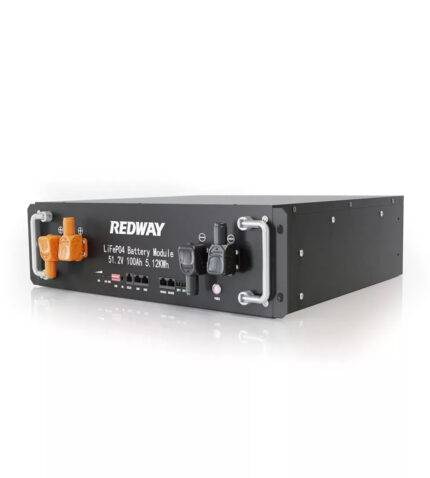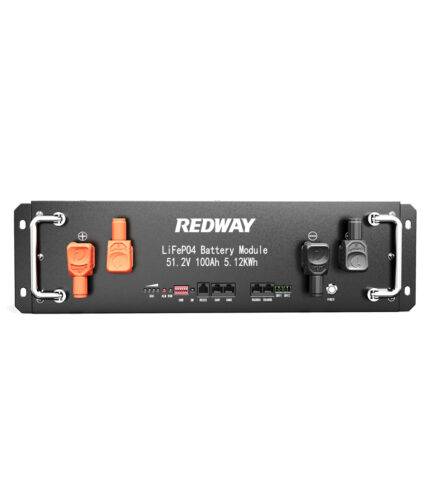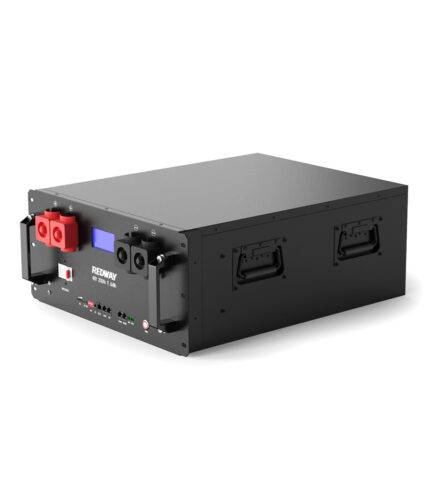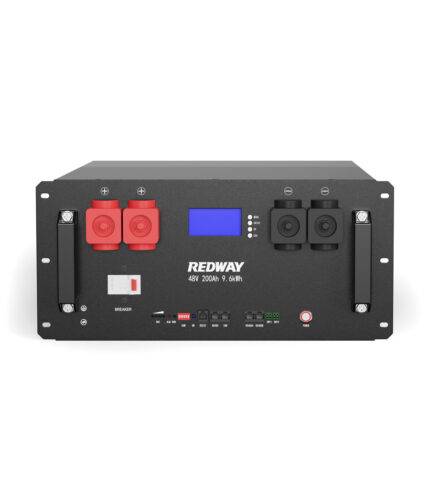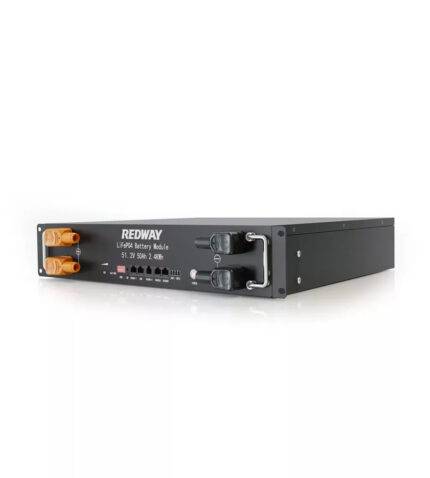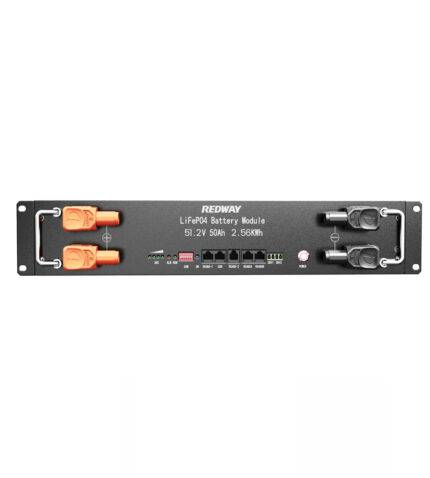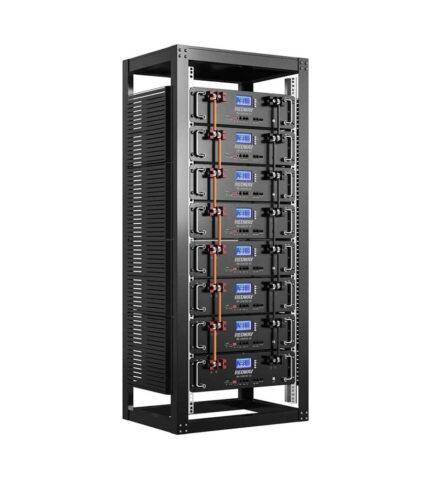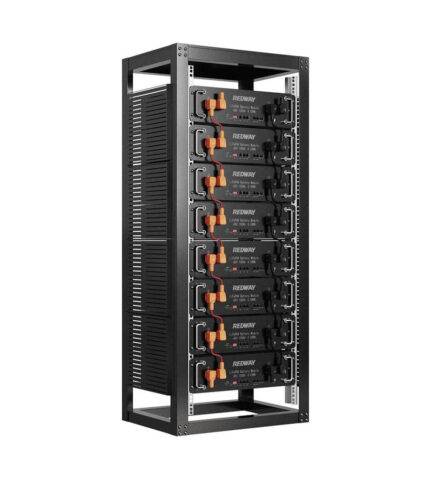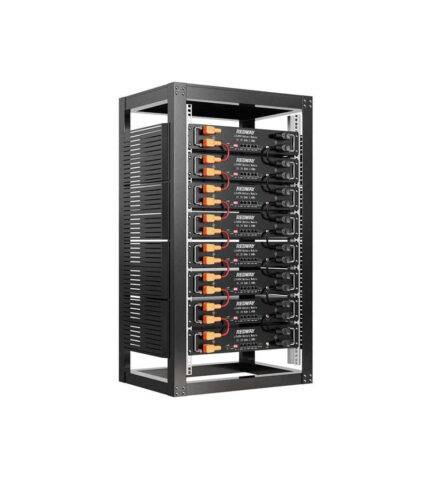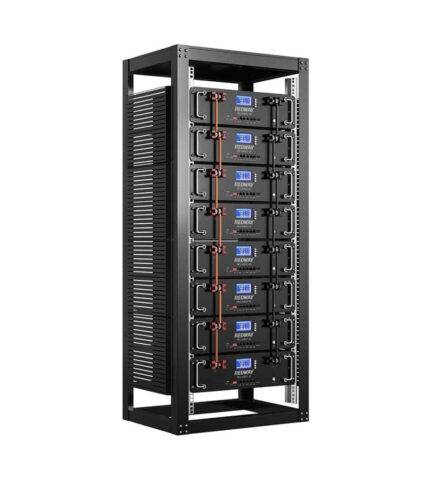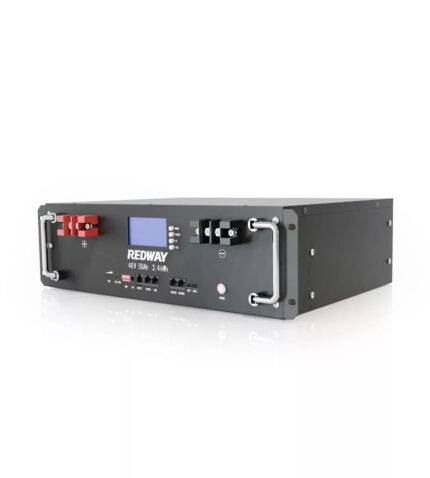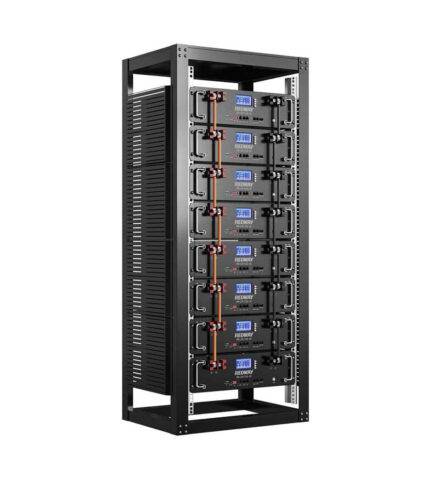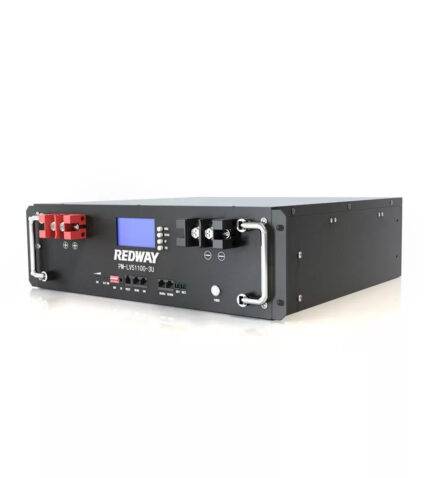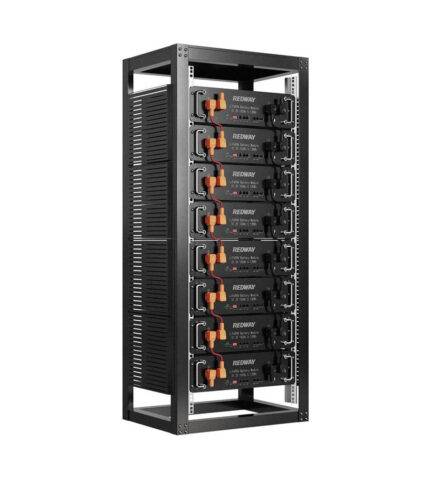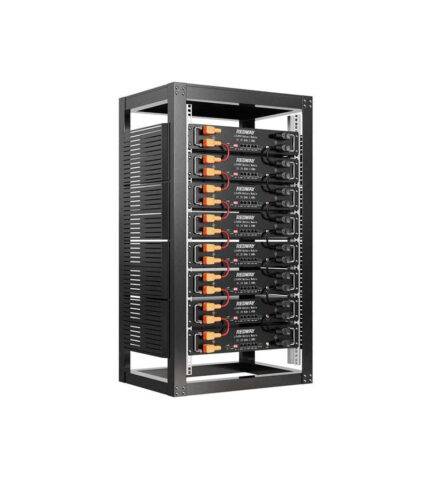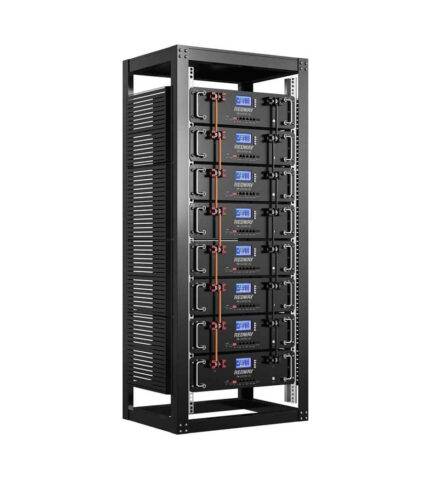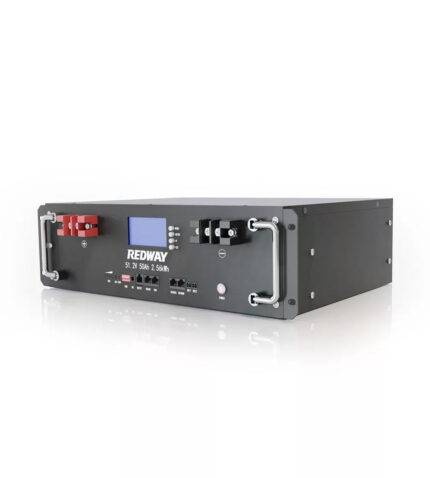Why select rack-mounted lithium batteries for efficient energy storage?
Rack-mounted lithium batteries are preferred for efficient energy storage due to their numerous benefits. They offer improved efficiency compared to lead-acid batteries, ensuring optimal utilization of stored energy. Additionally, rack-mounted batteries allow for efficient use of space by consolidating batteries into a single rack, maximizing storage capacity. These batteries also come with built-in protection functions, including over- and under-voltage protection, short-circuit protection, and over-temperature protection. With their superior performance and space-saving design, rack-mounted lithium batteries are an excellent choice for efficient energy storage.
- Improved efficiency: Rack-mounted lithium batteries offer higher energy utilization rates compared to lead-acid batteries, resulting in more efficient energy storage.
- Space utilization: By consolidating batteries into a single rack, rack-mounted batteries maximize the use of available space, allowing for efficient storage capacity.
- Protection functions: Rack-mounted batteries come equipped with complete protection functions, including over- and under-voltage protection, short-circuit protection, and over-temperature protection.
How do modular lithium-ion racks enhance solar energy systems?
Modular lithium-ion racks are instrumental in enhancing solar energy systems. Their advantages include scalability, flexibility, easy maintenance, and efficient space utilization. With modular racks, solar energy systems can easily be expanded by adding battery modules to increase storage capacity. The modular design allows for customization and flexibility in configuring the battery system to meet specific energy requirements. Maintenance becomes simplified as individual battery modules can be easily replaced or repaired without affecting the entire system. Additionally, the compact design optimizes space utilization, making modular racks ideal for installations with limited space.
- Scalability: Modular racks allow for easy expansion of the solar energy system by adding battery modules to increase storage capacity.
- Flexibility: The modular design enables customization and flexibility in configuring the battery system to meet specific energy requirements.
- Easy maintenance: Individual battery modules can be easily replaced or repaired without affecting the entire system, simplifying maintenance and troubleshooting processes.
- Efficient space utilization: The compact design of modular racks optimizes space utilization, making them suitable for installations with limited space.
What makes CATL and BAK cells superior in rack-mounted batteries?
CATL and BAK cells are preferred in rack-mounted batteries due to their superior qualities. These cells offer high energy density, allowing for efficient energy storage in a compact space. With their high efficiency, they can store and release energy effectively, optimizing overall system performance. Additionally, CATL and BAK cells incorporate advanced safety features, ensuring reliable operation and protection against potential hazards. Their reliability and long lifespan make them a trusted choice for rack-mounted battery systems.
- High energy density: CATL and BAK cells have a high energy density, allowing for efficient energy storage in a compact space.
- Efficiency: These cells exhibit high efficiency in storing and releasing energy, optimizing overall system performance.
- Safety features: CATL and BAK cells incorporate advanced safety features, such as thermal management systems and protection against overcharging and short circuits.
- Reliability: These cells are known for their reliability and long lifespan, providing consistent performance over time.
How does a smart BMS improve the performance of rack-mounted lithium batteries?
A smart BMS is essential for enhancing the performance of rack-mounted lithium batteries. It monitors and controls the charging and discharging processes, ensuring optimal performance and extending battery lifespan. The BMS also regulates the temperature of the batteries within a narrow range, preventing overheating or excessive cooling that can impact performance. Additionally, it ensures uniform charging and discharging among cells, maximizing overall performance. By optimizing efficiency and incorporating safety features, a smart BMS improves the performance and reliability of rack-mounted lithium batteries.
- Monitoring and control: The BMS monitors and controls the charging and discharging processes, optimizing performance and extending battery lifespan.
- Temperature regulation: It maintains the temperature of the batteries within a narrow range, preventing overheating or excessive cooling that can affect performance.
- Balancing: The BMS ensures uniform charging and discharging among cells, preventing capacity imbalances and maximizing overall performance.
- Efficiency optimization: By monitoring the state of charge and other parameters, the BMS optimizes the charging and discharging processes, improving energy efficiency.
- Safety enhancement: The BMS incorporates safety features such as overcharging and over-discharging protection, safeguarding the batteries against potential hazards.
Why are stackable designs crucial for commercial lithium battery systems?
Stackable designs are crucial for commercial lithium battery systems as they optimize space utilization, simplify installation and expansion, and enhance reliability. By stacking batteries in a modular system, more batteries can be installed in a compact footprint, allowing for efficient space utilization. The modular nature of stackable designs also simplifies installation and enables easy expansion of the battery system as energy demands increase. Moreover, the stackable design enhances reliability by achieving redundancy, ensuring uninterrupted power supply.
- Efficient space utilization: Stackable designs optimize space utilization, accommodating more batteries in a compact footprint.
- Easy installation and expansion: The modular nature of stackable designs simplifies installation and allows for easy expansion as energy demands increase.
- Enhanced reliability: Stackable battery packs offer increased efficiency and reliability, ensuring uninterrupted power supply.
How do lithium-ion battery modules protect cells from external shock, heat, or vibration?
Lithium-ion battery modules protect cells through robust casing, advanced thermal management systems, and vibration-damping materials. These features prevent physical damage, manage heat distribution, and absorb shocks, ensuring the cells remain secure and operational under various conditions.
How does the modular mechanical concept of lithium-ion battery modules benefit integrators?
The modular mechanical concept allows integrators to easily scale battery systems by adding or removing modules. It simplifies design, installation, and maintenance, enabling flexibility in power capacity and configuration to meet specific application needs.
What is the difference between a lithium-ion battery module and a lithium-ion battery pack?
A lithium-ion battery module is a single unit containing multiple cells, managed by a Battery Management System (BMS). A lithium-ion battery pack is a complete system comprising multiple modules, additional BMS layers, and often a protective casing, designed for a specific application.
What are the latest news updates on lithium-ion battery technology?
The latest updates in lithium-ion battery technology include advancements in solid-state batteries, increased energy density, faster charging capabilities, and improved safety features. Innovations focus on extending battery life, enhancing performance, and reducing costs for broader adoption.
What is an NCM battery module and what are its applications?
An NCM battery module uses a cathode material composed of Nickel, Cobalt, and Manganese. It offers high energy density and stability, making it ideal for applications in electric vehicles, energy storage systems, and portable electronics.
What significant tests have NCM battery modules recently passed?
Recent NCM battery modules have passed rigorous safety and performance tests, including thermal runaway prevention, cycle life testing, and high-stress environmental evaluations. These tests ensure the modules meet industry standards for reliability and safety in demanding applications.
What recent advancements have been made in NCM lithium-ion battery technology?
Recent advancements in NCM lithium-ion battery technology include improved cathode compositions for higher energy density, enhanced thermal management systems, and faster charging capabilities. Research is also focused on reducing cobalt content to lower costs and improve sustainability.
What are the specifications of various LiFePO4 battery modules?
LiFePO4 battery modules typically offer a voltage range of 12V to 48V, capacities from 20Ah to 200Ah, and an energy density of around 90-120 Wh/kg. They feature high cycle life (2,000+ cycles), excellent thermal stability, and built-in BMS for safety.
What are the specifications of various NCM battery modules?
NCM battery modules generally provide a voltage range of 24V to 96V, with capacities from 50Ah to 300Ah. They offer higher energy density (150-200 Wh/kg), fast charging capabilities, and a lifespan of 1,000-2,000 cycles, with advanced BMS integration.
What are the advantages of LiFePO4 modules over other types of batteries?
LiFePO4 modules offer several advantages, including superior safety, long cycle life, better thermal stability, and consistent performance across a wide temperature range. They also have lower self-discharge rates and are more environmentally friendly compared to other lithium-ion batteries.













